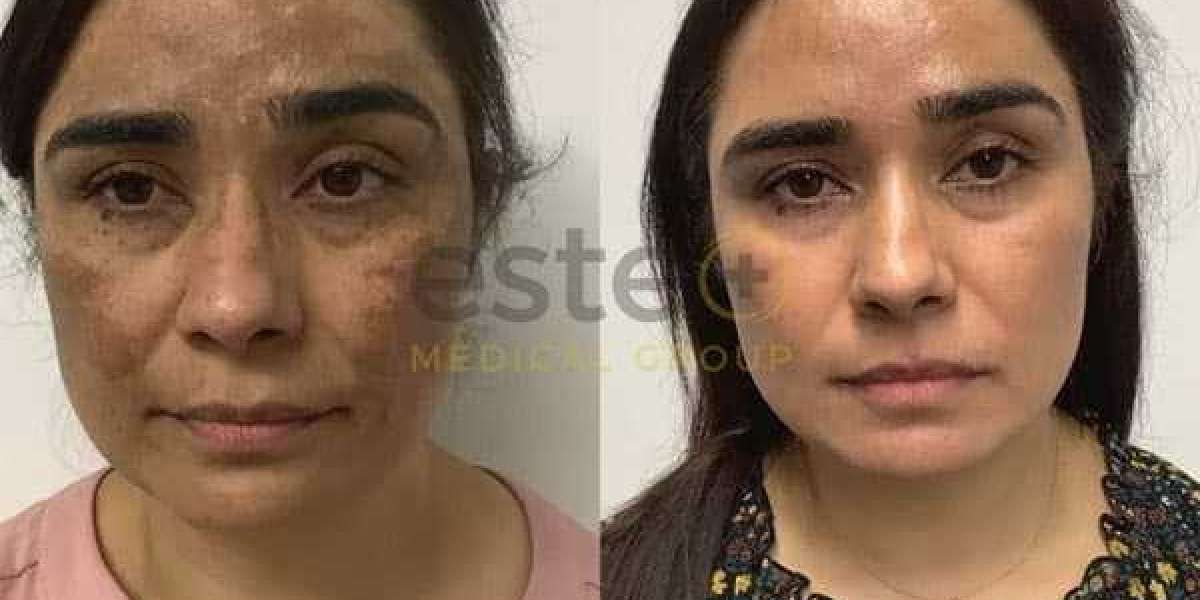Skin pigmentation issues such as dark spots, freckles, and uneven tone can significantly affect a person’s confidence. While many treatments are available, laser pigmentation removal has become one of the most effective and reliable solutions. This advanced procedure targets unwanted pigmentation with precision, helping individuals achieve clearer and more even-toned skin. Understanding how laser pigmentation removal works can provide insight into why it has gained popularity in modern dermatology.
Understanding Skin Pigmentation
What Causes Pigmentation?
Pigmentation refers to the natural coloring of the skin, primarily determined by melanin. When melanin is produced unevenly or in excess, it can lead to visible spots or patches. Factors such as sun exposure, hormonal changes, aging, and skin injuries often trigger this condition.
Common Types of Pigmentation Problems
Several forms of pigmentation can be addressed with advanced treatments. These include:
Sunspots and age spots caused by prolonged exposure to ultraviolet rays.
Freckles that often appear due to genetic predisposition and sun exposure.
Melasma typically triggered by hormonal changes such as pregnancy or contraceptive use.
Post-inflammatory hyperpigmentation resulting from acne, injuries, or skin treatments.
Understanding these different conditions is essential because the choice of treatment depends on the type and severity of pigmentation.
The Science Behind Laser Pigmentation Removal
How the Technology Works
Laser pigmentation removal relies on high-intensity beams of light that target melanin within the skin. When the laser is applied, the energy is absorbed by the pigmented cells. This process breaks down the melanin into tiny fragments, which the body’s natural immune system gradually removes. Over time, the treated areas begin to fade, leading to a more even skin tone.
Selective Photothermolysis Explained
The principle of selective photothermolysis is central to this treatment. This concept refers to the ability of lasers to target specific chromophores, such as melanin, without affecting surrounding tissues. By using precise wavelengths, the laser focuses on the pigmentation alone, minimizing the risk of damage and ensuring effective results.
Types of Lasers Used
Different laser systems are employed depending on the depth and type of pigmentation. Common options include:
Q-switched lasers that deliver short bursts of energy, ideal for treating superficial pigmentation such as freckles and age spots.
Fractional lasers that penetrate deeper into the skin, addressing stubborn or widespread pigmentation.
Pico lasers which use ultra-short pulses, offering faster results with minimal downtime.
Each type of laser has its strengths, and dermatologists typically select the most suitable option after evaluating the individual’s skin type and pigmentation concerns.
What to Expect During the Procedure
Initial Consultation
Before undergoing treatment, patients usually have a consultation to assess their skin type, pigmentation severity, and medical history. This step ensures that laser pigmentation removal is safe and appropriate for the individual.
The Treatment Process
During the session, protective eyewear is worn to shield the eyes from laser light. The laser device is then directed onto the targeted areas of pigmentation. Most individuals describe the sensation as a mild snapping feeling on the skin, which is generally well-tolerated.
Treatment Duration and Sessions
The length of each session depends on the size of the area being treated. Smaller spots may take just a few minutes, while larger areas might require more time. Multiple sessions are often recommended for optimal results, usually spaced several weeks apart.
Aftercare and Recovery
Immediate Reactions
Following treatment, it is common to experience slight redness or swelling in the treated areas. These reactions are temporary and usually subside within a few hours to a couple of days.
Skin Healing Process
Over the following weeks, the treated pigmentation may darken before flaking off or fading. This is a normal part of the healing process as the body clears the fragmented melanin particles.
Essential Aftercare Tips
To maintain results and promote healing, patients are often advised to:
Avoid direct sun exposure and use a high SPF sunscreen.
Keep the treated skin clean and moisturized.
Refrain from picking or scratching the area.
Follow all post-treatment instructions provided by their skincare professional.
Adhering to aftercare guidelines is crucial for achieving long-lasting results and minimizing potential side effects.
Benefits of Laser Pigmentation Removal
Precision and Effectiveness
One of the primary advantages of this treatment is its ability to selectively target pigmentation without damaging surrounding skin. This precision makes it highly effective compared to topical creams or chemical peels.
Minimal Downtime
Unlike invasive procedures, laser pigmentation removal typically requires little to no downtime. Most individuals can return to daily activities immediately after treatment.
Suitable for Various Skin Concerns
From sunspots to melasma, this treatment can address a wide range of pigmentation issues. Its versatility makes it a popular choice for individuals with different skin types and concerns.
Potential Risks and Considerations
Possible Side Effects
Although generally safe, some people may experience temporary side effects such as redness, swelling, crusting, or mild discomfort. These usually resolve quickly with proper aftercare.
Not Suitable for Everyone
Laser pigmentation removal may not be recommended for individuals with certain medical conditions, very dark skin tones, or those who are pregnant. A thorough consultation helps determine suitability.
Importance of Professional Treatment
Choosing a qualified professional for the procedure is vital. Proper assessment, the right laser choice, and skilled application significantly reduce risks and ensure the best outcomes.
Long-Term Results and Maintenance
Longevity of Results
The results of laser pigmentation removal can be long-lasting, especially when combined with a consistent skincare routine. However, new pigmentation may develop over time due to sun exposure, aging, or hormonal changes.
Maintenance Treatments
To maintain a clear complexion, some individuals may opt for occasional maintenance sessions. Pairing treatment with preventive measures such as daily sunscreen use can help prolong results.
Lifestyle and Skincare Support
A healthy lifestyle, including a balanced diet, adequate hydration, and proper skin care, plays an important role in sustaining improvements achieved through laser treatment.
Conclusion
Laser pigmentation removal is a scientifically advanced and effective solution for treating unwanted skin discoloration. By targeting melanin with precision, the procedure helps achieve a smoother, clearer, and more youthful complexion. With minimal downtime and long-lasting benefits, it has become one of the most sought-after treatments for pigmentation concerns.
Individuals considering this treatment should seek professional advice to determine suitability and create a tailored treatment plan. With the right approach and proper aftercare, laser pigmentation removal can transform skin appearance and restore confidence.







